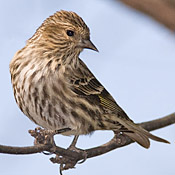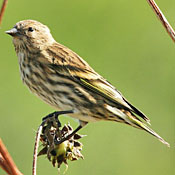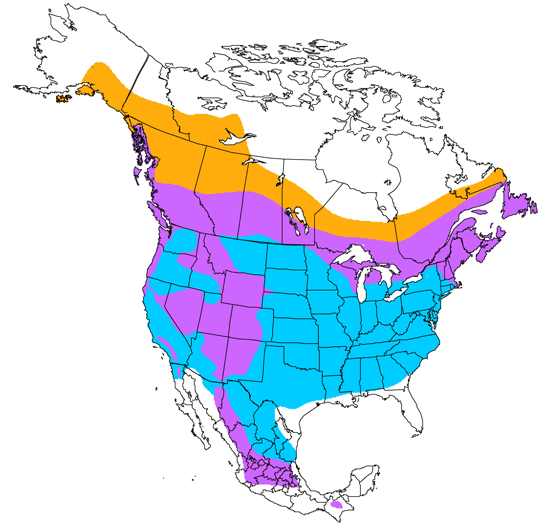Pine Siskin
Spinus pinus

Perching

Length: 5 in. (13 cm )
Generally found in coniferous or mixed coniferous forest and forest edge, it is readily attracted to artificial feeders, especially those with black thistle seed. This species occurs in small to large flocks all year round, and it often associates with goldfinches and juncoes. It nests in small colonies, and the nest is placed high on a horizontal limb toward its tip. The nesting material is twigs, grass fur and feathers. During the winter, this species can be quite nomadic and eruptive. The food is mainly seeds, buds, and flower nectar in the summer and rarely insects.
The four-digit banding code is PISI.
Bibliographic details:
- Article: Pine Siskin
- Author(s): Dr. Biology
- Publisher: Arizona State University School of Life Sciences Ask A Biologist
- Site name: ASU - Ask A Biologist
- Date published:
- Date accessed:
- Link: https://askabiologist.asu.edu/activities/bird/pine-siskin
APA Style
Dr. Biology. (). Pine Siskin. ASU - Ask A Biologist. Retrieved from https://askabiologist.asu.edu/activities/bird/pine-siskin
Chicago Manual of Style
Dr. Biology. "Pine Siskin". ASU - Ask A Biologist. . https://askabiologist.asu.edu/activities/bird/pine-siskin
Dr. Biology. "Pine Siskin". ASU - Ask A Biologist. . ASU - Ask A Biologist, Web. https://askabiologist.asu.edu/activities/bird/pine-siskin
MLA 2017 Style
Be Part of
Ask A Biologist
By volunteering, or simply sending us feedback on the site. Scientists, teachers, writers, illustrators, and translators are all important to the program. If you are interested in helping with the website we have a Volunteers page to get the process started.





